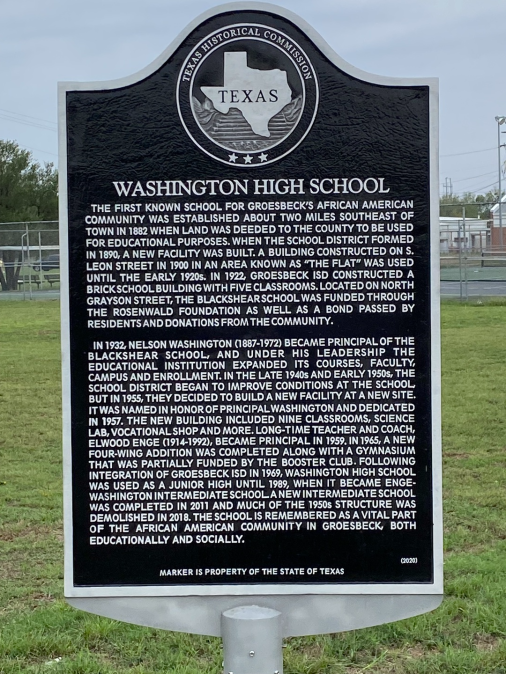Historical Marker Dedications
Washington High School
The Texas Historical Marker for Washington High School in Groesbeck was dedicated in a ceremony on Saturday, September 16, 2023. The school was built in 1957 for African American students in Groesbeck ISD. After integration, the school became Groesbeck Junior High and serrved that purpose until 1989. It then became Enge-Washington Intermediate School and was named for the two principals of Washington High School, Nelson Washington and Elwood Enge. A new intermediate school was completed in 2011, and most of the old school was demolished in 2018.
Chinese Labor on the Houston & Texas Central Railway
On Friday, June 7, 2024, a Texas historical marker titled Chinese Labor on the Houtson & Texas Central Railway was dedicated in Kosse. Thanks to Preservation Texas for sponsoring the marker and hosting the dedication ceremony. Speakers included Evan Thompson - Executive Director of Preservation Texas, Brooks Valls - Mayor of Kosse, Laura Lehmons - Vice President, Kosse Heritage Society, William Reagan - Chair, Limestone CHC, Texas Representative Angelia Orr, and U.S. Congressman Pete Sessions.












